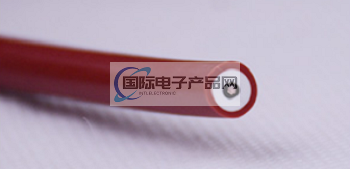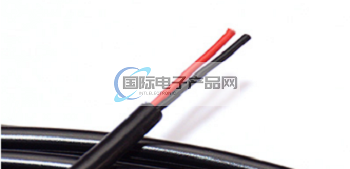Categorization:Product Information
I. What are the types of flame retardant electrical cables?
Flame-retardant cables are cables in which the specimen is burned under the specified test conditions, and the flame spreads only within a limited range after the test fire source is withdrawn, and the residual flame or residual burns can be extinguished by itself within a limited period of time. The fundamental characteristic is: in the case of fire may be burned and can not run, but can prevent the spread of fire. In layman's terms, the wire in case of fire, the ability to limit the combustion to a localized range, does not produce the spread, to save the other various equipment, to avoid causing greater losses. Flame-retardant wire and cable types can be divided into: ordinary flame-retardant wire and cable, low-smoke flame-retardant wire and cable, low-smoke halogen-free flame-retardant wire and cable, fluoroplastic flame-retardant wire and cable.

II. What are the properties associated with the types of flame retardant electrical cables?
1.Common flame retardant wire and cable insulation and sheath materials generally used is halogen-containing (or add halogen-containing flame retardant modified) polymer materials, the most commonly used is polyvinyl chloride (PVC) materials. Ordinary PVC resin has a very high electrical insulation, chemical resistance, abrasion resistance, aging resistance, and the characteristics of the low price and has become China's current use of more raw materials for cable materials, but PVC combustion will be released hydrogen chloride, carbon monoxide, carbon dioxide, a variety of aromatic hydrocarbons, chlorine-containing compounds, and other toxic and harmful gases. 2. low-smoke flame-retardant wire and cable can be used in the insulation and sheath materials, but also to add aluminum hydroxide, magnesium hydroxide and other flame retardant agents. Add aluminum hydroxide, magnesium hydroxide and other inorganic hydroxide flame retardants. The flame retardant principle for the cohesive phase flame retardant principle: aluminum hydroxide, magnesium hydroxide thermal decomposition to release water, while absorbing heat to reduce the actual temperature of the insulation and sheath materials to inhibit the decomposition of the material and the release of flammable gases. The generated metal oxides are also fire-resistant materials, covering the surface of the materials can improve the insulation and sheath resistance to flame, and play the purpose of preventing combustion by isolating the air. The advantages of aluminum hydroxide and magnesium hydroxide as flame retardants are as follows: non-toxic, non-volatile, inexpensive, flame retardant, smoke reduction. However, the compatibility with the base resin is poor, as a flame retardant must be added in large quantities to achieve a certain level of flame retardancy, and a large number of additives can easily lead to material molding and processing, mechanical properties. Antimony compounds can also be added to low smoke type flame retardant cables. Antimony compounds itself is not a flame retardant, but a flame retardant synergistic agent, often used in conjunction with halides, antimony trioxide at high temperatures and halide reaction to generate antimony trihalide or antimony halide, the flame retardant principle for the gas-phase flame retardant principle: antimony trihalide vapors can be a longer period of time to stay in the combustion zone, which can dilute flammable gases, antimony trihalide vapors are dense, covering the surface of the polymer, which can play a role in thermal and oxygen barrier, which is very important for the suppression of material combustion, but also can be added in large amounts to achieve a certain flame retardant level. This is very effective in inhibiting the combustion of materials; antimony halide decomposition for the heat-absorbing reaction, can effectively reduce the temperature and decomposition rate of flame-retardant materials; liquid and solid antimony halide particles of the surface effect can reduce the flame energy; antimony halide can promote the cohesive phase of the formation of charcoal reaction, relatively delay the generation of combustible gases of the material's thermal decomposition and oxidative decomposition, and the generation of charcoal layer can prevent combustible gases from escaping into the flame zone and protect the lower layer of materials from destruction. Low-smoke halogen-free flame-retardant wire and cable insulation and jacket materials are mostly thermoplastic elastomer materials, materials do not contain halogenated elements such as fluorine, chlorine, bromine, iodine, etc., in the production process to exclude the mercury, chromium, cadmium, lead and other heavy metal elements of greater pollution to the environment, and often use the materials have polyamide. The flame retardant mechanism of this cable is interrupted exchange flame retardant mechanism. Interrupted exchange flame retardant refers to the combustion of flame-retardant materials to take away part of the heat generated, resulting in the material can not maintain the thermal decomposition temperature, and thus can not continue to produce flammable gases, so the combustion self-extinguishing. For example, when the flame retardant material by strong heat or combustion can be melted, and molten material drops, most of the heat can be taken away, resulting in delayed combustion, and finally may terminate the combustion. This type of cable due to the burning of the equipment and building corrosion is very small, and thus can reduce economic losses to a greater extent, has a high degree of safety performance. But the droplets of hot liquid can ignite other substances, increasing the risk of fire, so the choice of flame retardant should be considered when the anti-melting droplets.4. Fluorine plastic flame retardant wire and cable due to the special chemical structure of the material with its own flame retardant. This material does not need to be modified or flame retardant treatment, with high temperature, oxidation, non-flammable, high oxygen index, self-extinguishing and other characteristics of the fiber optic communication cable is ideal for line. However, the cost of this kind of flame retardant wire and cable exceeds the above three kinds of cables, and there is no price competition in the mass market, so it is only used in security projects at present.

-Third, on the international electronic products network platform related to the introduction and sales of products brief: international electronic products network - a professional agent / production / sales of a variety of {connectors | wiring harness | wire and cable products }; if you have a related [connectors | wiring harness | wire and cable products] purchasing / sourcing needs or would like to buy / to understand which connectors | wiring harness | wire and cable products we can provide solutions, please contact the Division I business personnel below; If you have related [connector | wire harness | wire and cable production] sales / resources and promotion needs, please click on the ¡¡ Business Cooperation ← ¡" to discuss with a person!